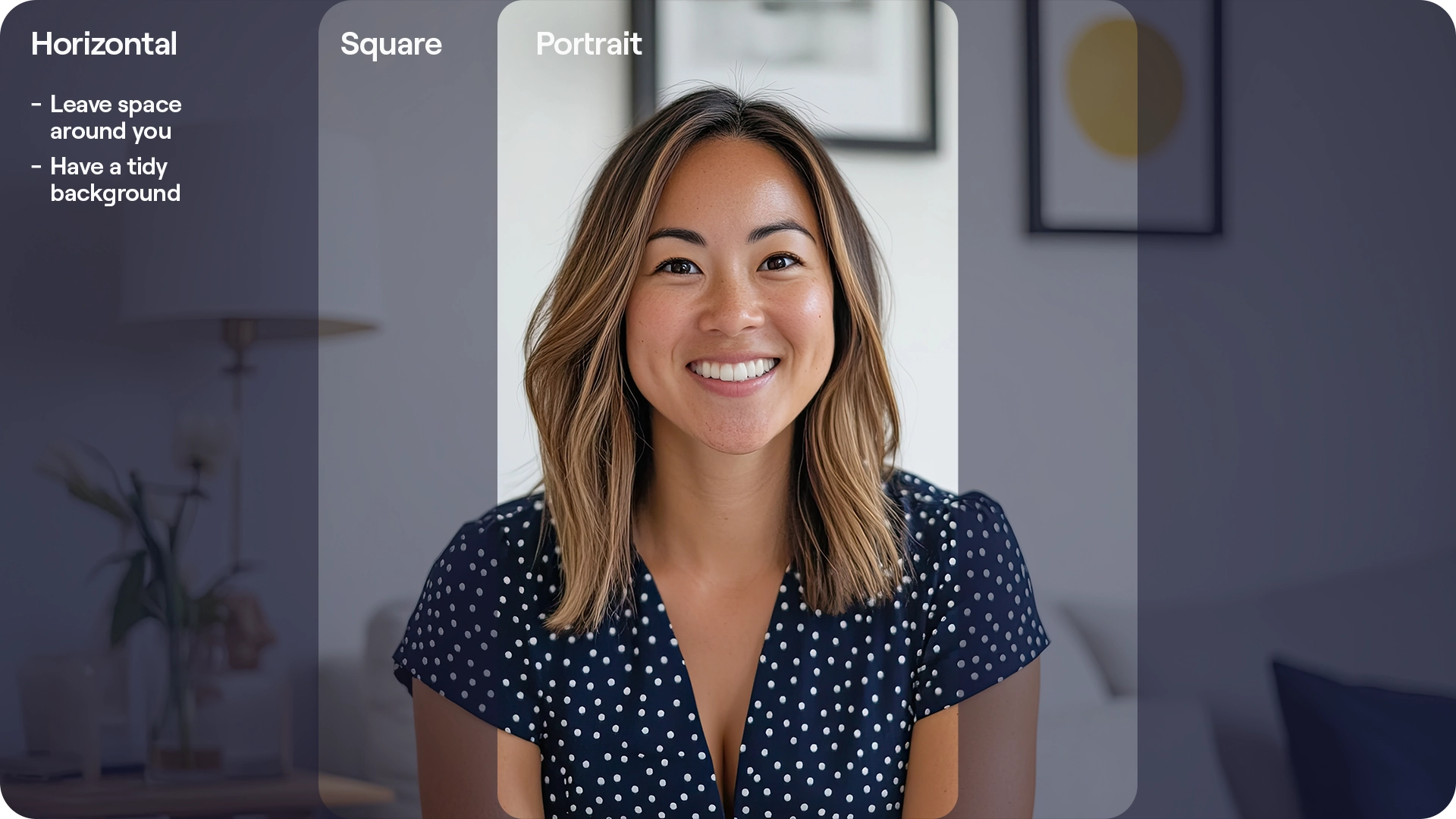06
Video
This page is your go-to resource for creating high-quality, consistent, and on-brand videos across all marketing campaigns. Follow our best practice guidelines to ensure every video reflects our brand with clarity and impact.
Remote Recording Guidelines
When you are recording a video remotely or instructing someone to record podcasts, webinars, video calls, etc. please follow these guidelines on:
- Positioning
- Lighting
- Sound
Positioning
Personal Position Specifications
When recording, any person should position themselves in front of the camera as follows:
1. Leave space around you (or the person appearing onscreen) as illustrated in order to be able to obtain maximum quality for future videos.
This is because your video should be able to be converted to any other format (portrait, landscape or square) without the person being too close to the camera.
2. Please ensure you have a tidy background behind you, or blur the background
If you are hosting a chat or video call and have an external guest, kindly request that they follow these specifications.

Lighting
It's important to ensure that any person appearing onscreen is well-lit so their face is clearly visible. Here are some key guidelines to achieve good lighting:
1. Natural Light:
Position yourself facing a window to utilize natural light. Avoid having windows or bright lights behind you, as this can create a silhouette effect.
2. Artificial Lighting:
If natural light isn't available, use artificial lighting. A desk lamp or ring light positioned in front of you at eye level can provide even lighting.
3: Avoid Overhead Lighting:
Overhead lights can create unflattering shadows on your face. Use lights that are positioned at face level or slightly above.
By following these guidelines, you'll ensure that everyone onscreen is well-lit and clearly visible, enhancing the overall quality of your home recordings.
Sound
To check for sound when recording at home, follow these steps:
1. Test Your Microphone: Ensure your microphone is properly connected and recognised by your device.
2. Adjust Settings: Check and adjust the volume levels in your recording software or device settings.
3. Do a Test Recording: Record a short clip and play it back to ensure the audio is clear and at the right volume.
4. Minimize Background Noise: Close windows, doors, and mute any other electronic devices (i.e. fans, phones on silent) to reduce unwanted noise.
By doing these quick checks, you'll ensure your sound quality is clear and professional.
YouTube Best Practices
YouTube Video & SEO Best Practices
Video length:
- Most videos aim for: 7-10 minutes
- Deep dives, breakdowns, more in-depth videos: 10-20 minutes
- Videos under 5 minutes tend to get lower watch time totals, which reduces their discoverability
Thumbnails:
- They should contain an eye-catching image & clear, simple text
- Images that contain human faces are best
Keywords:
- During your video, say your SEO target keyword out loud at least once & preferably multiple times
Video title:
- Have your target keyword first (e.g.: “B2B lead generation: best practices”)
- Make them intriguing & descriptive – don’t clickbait
- Max length: 20-70 characters
Meta Description:
- Longer descriptions are always better
- Incorporate keywords into the description but don’t keyword stuff
- Max length: 100-150 words